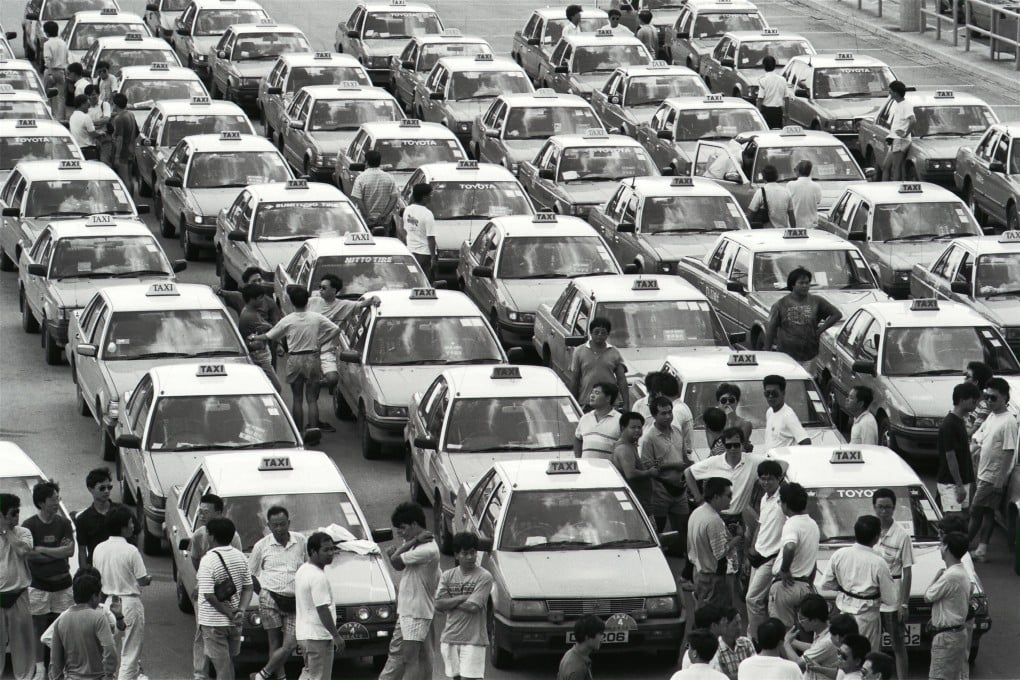Advertisement
Then & Now | From rickshaws to motor vehicles: the evolution of Hong Kong’s taxis
Taxis may be ubiquitous in Hong Kong today, but for much of the city’s urban history, human-powered transport was the only choice
Reading Time:3 minutes
Why you can trust SCMP
0

From urban Hong Kong’s earliest years, hired conveyances have been a common sight. Whether in the heart of the city or in outlying rural districts, licensed taxis remain the most usual form – colour-coded red for Hong Kong Island and Kowloon, green in the New Territories and pale blue for Lantau Island. Ride-hailing services, such as Uber and GoGoVan, have appeared in recent years, and the introduction of premium taxi fleets last month will further transform the local streetscape.
The reason taxis are so ubiquitous across Hong Kong is simple, and differ little from that for earlier modes of transport such as sedan chairs and rickshaws. Then and now, few people have either owned a private vehicle or could afford one. In consequence, the need for private transport had to be met, and frequently on the spot.

From the 1840s onwards, hired conveyances took the form of sedan chairs. At their most basic a lightweight rattan chair fitted onto two long, tensile carrying poles, these were typically shouldered by two bearers (more opulent, palanquin-style versions had four or more bearers) and then, swiftly borne aloft, off one went to the stated destination, the passenger bouncing along gently in tandem with the two bearers’ synchronised marching pace. Sedan chairs were ideally suited to the mountainous topography on Hong Kong Island. Hillside backstreets in Central and further west such as Ladder Street, with broad stone steps interspersed by periodic flat spaces, reflect an early urban design necessity for safe use of these vehicles on steep slopes. In steady decline by the 1940s, as motor vehicles took over the streets, Hong Kong’s last sedan chairs had disappeared by the early 60s.
The two-wheeled Japanese jinricksha (soon abbreviated here, and elsewhere, to rickshaw), which employed a single puller, had been introduced to Hong Kong by the end of the 19th century, and quickly became one of the city’s stereotypical postcard sights. Rickshaws were only in widespread use on flatter urban areas where these ungeared, human-powered vehicles were practical. For most of the rickshaw period in Hong Kong, these were more commonly found in Kowloon, where relatively flatter areas over longer distances were more usual. Both modes of transport were typically found at designated ranks – much like taxis today – and fares were legally standardised.

The widespread availability of both sedan chairs and rickshaws was underpinned by another brutal economic reality. For most of its recorded history, human labour was cheaper than that of animals in China, and Hong Kong was no exception. As horses and other draught animals require substantial fodder, specially grown on scarce arable land, and also take up more living space in their off-hours than people do, man-borne conveyances were usual, and remained so until well within living memory.
Advertisement
